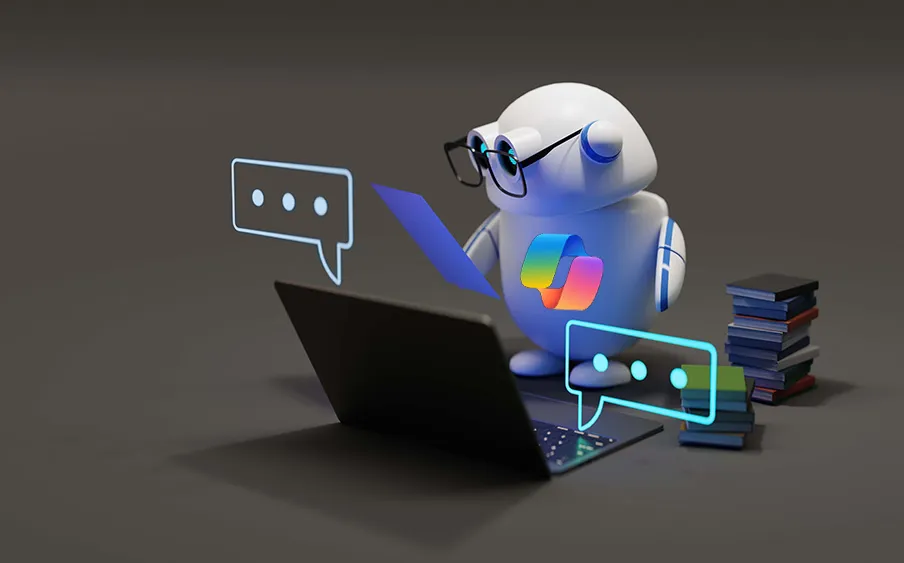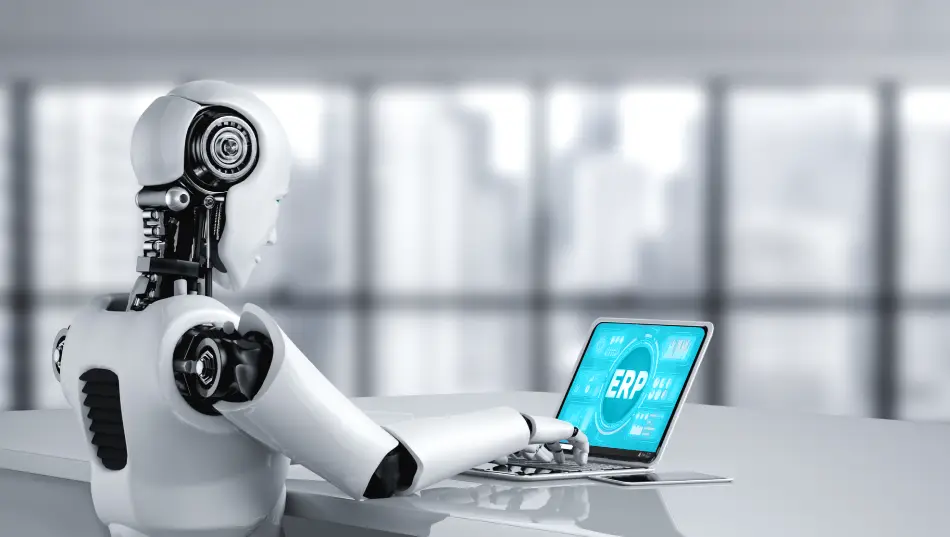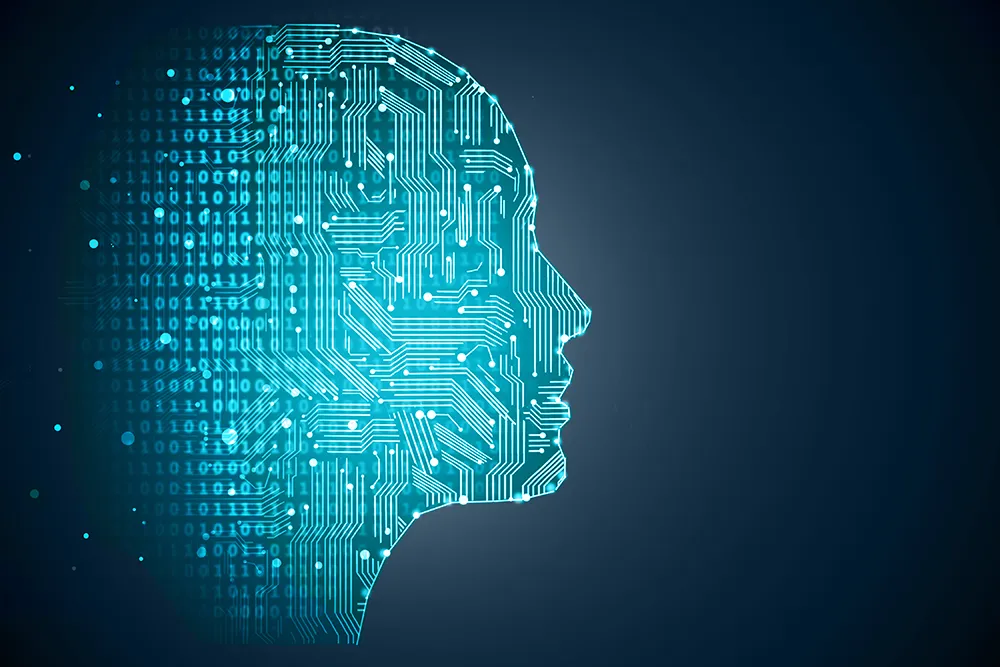Part of our Everyday Life Artificial Intelligence
relieves Employees,
but does not
replace them
but
replace
Navigation services calculating the fastest route 🧭, the weather forecast ⛅ and streaming services recommending series 📺 - artificial intelligence is involved in all these everyday things. And AI is also becoming more and more of an issue for companies.
What is “Artificial Intelligence”?
The term “artificial intelligence” (AI) stands for a technology that enables machines to imitate human-like thought and action processes. This works via algorithms and statistical models enabling machines to make human-like decisions, analyze data, recognize patterns and draw conclusions.
AI is already Part of Everyday Life
In many areas, AI is part of our everyday lives. Perhaps without you even realizing it? In these areas, for example, AI is involved:
- Streaming services such as Netflix, which recommend films and series
- Algorithms of many search engines, such as Google
- Filtering spam from your email inbox
- Navigation services that constantly recalculate the fastest route to your destination
- Monitoring on social media
- Face recognition services
- Most Smart Home features
- Daily weather forecast
- Autonomous or semi-autonomous driving
- Intelligent field irrigation in agriculture
- Translation of operating instructions into other languages
- Avatars being created with the Lensa app
The Beginnings of AI go back to the 20th Century
Artificial intelligence has its roots in the 20th century, when scientists began to develop computer programs that could perform tasks that would normally require human intelligence. The concept of AI was first coined in the 1950s by mathematician and computer scientist John McCarthy.
The first algorithms and technologies were developed in the 1960s. These were already capable of solving simple problems and could, for example, play chess or translate texts. In the 1970s and 1980s, further progress was made in language and image recognition. Since then, the development of AI has continued to accelerate.
Artificial Intelligence is becoming more and more important for Companies
AI can help companies increase efficiency by using AI systems to automate and optimize some processes, which saves time and money. For example, companies can use AI systems to analyze data and make decisions on this basis. This can help decisions to be made faster and more informed.
Another benefit of AI is to improve the customer experience. For example, AI systems can be used to make personalized recommendations for products or services based on customer preferences and interests.
In addition, AI can help companies to gain better insights into their business processes. Through AI-supported data analysis, companies can identify and repair weak points in their processes. For example, AI systems help to identify trends in sales data or recognize problems in the supply chain.

AI relieves Employees - but does not replace them
Even if AI can take over human-like tasks, this does not necessarily mean that AI replaces employees. Rather, in many cases, AI can help to support them and expand their skills. AI-based image recognition, for example, can help to improve diagnoses in medicine - but does not replace doctors.
Overall, it depends on the type of work and the industry to what extent you can transfer human tasks to AI. Moreover, the implementation of AI usually also creates new jobs because employees are needed who specialize in the development, implementation and maintenance of AI systems.
From Machine Learning to Predictive Analysis - different Types of AI Tools
There are a variety of AI tools that can be relevant for companies, depending on the industry and field of application.
-
Machine Learning (ML): Machine Learning is concerned with the development of algorithms that can learn from experience and make predictions. Companies can use ML to identify patterns in data, make predictions and automate decisions.
-
Natural Language Processing (NLP): NLP is about processing human language. For example, companies can use it to analyze conversations with customers, understand the meaning of texts and develop chatbots or voice assistants.
-
Computer Vision: Computer Vision involves the automated processing and analysis of images and videos, including image, object and face recognition as well as video analysis. Computer vision also enables autonomous driving, for example - the technology helps the car to recognize and understand its surroundings.
-
Robotic Process Automation (RPA): The focus here is on the automation of business processes. Recurring tasks are carried out by software robots, allowing data entry, report generation and customer service to be automated, for example.
-
Predictive Analytics: This type of AI deals with the use of data, algorithms and statistical models to make predictions about future events or trends. Companies can use predictive analytics tools to forecast demand for their products or detect fraud, among other things. Airlines use predictive analytics to set their ticket prices.
Various Types of AI Tools
Machine Learning
Natural Language Processing
Computer Vision
Robotic Process Automation
Predictive Analytics
ChatGPT is an Example of Natural Language Processing (NLP)
The “ChatGPT” service is an example of a Natural Language Processing (NLP) tool. It is a language-generating model developed by the company OpenAI being able to process text input and generate responses based on it that are quite similar to those of a real person.
You can ask ChatGPT to explain a complicated topic in simple terms, list creative gift ideas for Mother’s Day or give you tips on how to get the bathroom grout clean again. To retrieve the knowledge, the tool has been fed with millions of texts from the internet, social media, online forums, newspaper articles and books.
ChatGPT can also be used in day-to-day business in many different fields of application - from customer service support and content creation to creative processes such as writing and poetry.
More information
on the topic Artificial Intelligence
on the


 Companies using AI
Companies using AI







